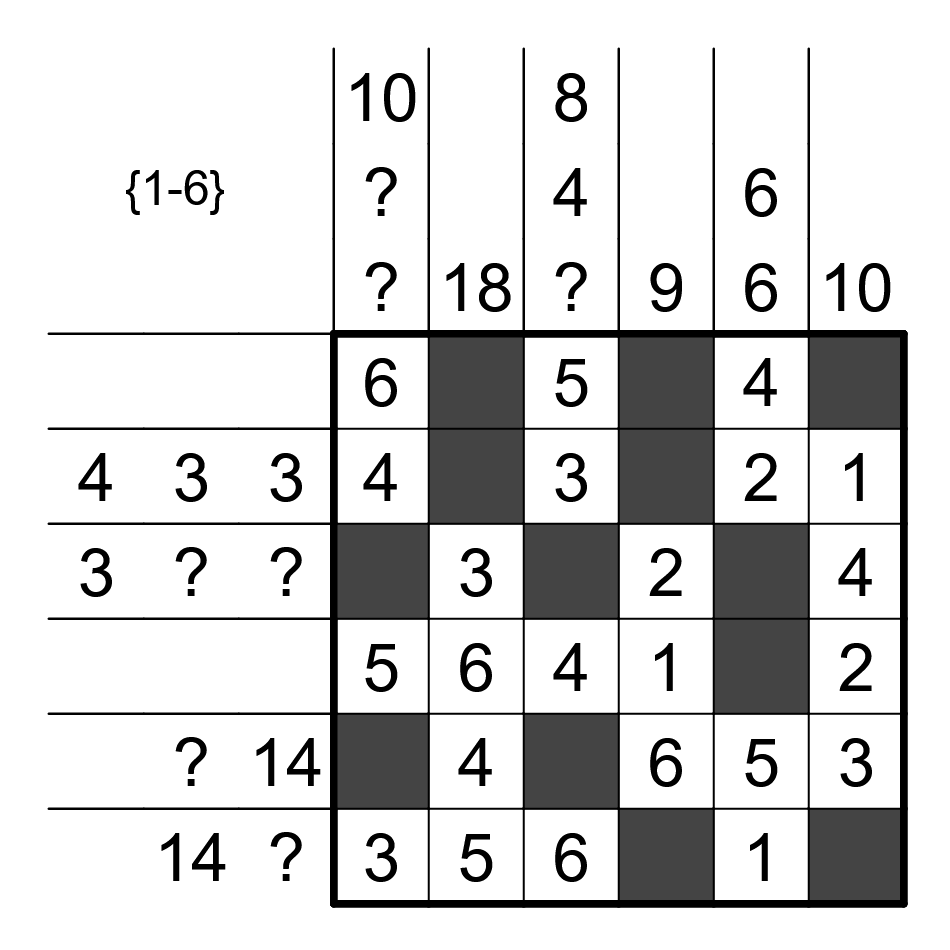Rules
Fill some of the grid cells with a number of the indicated range, such that a number does not appear twice in the same row or column. Unused cells have to be shaded. The clue outside the grid indicate the sum of adjacent numbers in that row or column in the correct order. Two groups of number have to be separated by at least one shaded cells.
A ‘?’ given as a clue represent any number greater or equal to 1.
For automatic solution checking, both the number and the shaded cells have to be correctly placed.
Example
Here is a grid of Japanese Sums and its solution


Solve the example online here.
History of Japanese Sums
According to the WPC unofficial wiki, Japanese Sums is a genre invented by Tim Peeters (Dutch) in 2003. The name is a reference, to Japanse puzzel the dutch name for Nonograms (also known as Hajie or Paint by numbers)